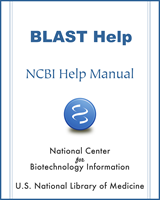BLAST is a Registered Trademark of the National Library of Medicine
NCBI Bookshelf. A service of the National Library of Medicine, National Institutes of Health.
BLAST® Command Line Applications User Manual [Internet]. Bethesda (MD): National Center for Biotechnology Information (US); 2008-.
BLAST can also limit a database search by a list of identifiers (e.g.: accessions), which should be specified one per line in a file. These identifiers, referencing the sequences to include or exclude in the BLAST search, should not contain any whitespace and should be retrievable from the BLAST database.
Starting with BLASTDB version 5, an accession list must be pre-processed before it can be used in a search. This process checks that the accessions appear to be real and produces a file optimized for use with BLAST. It is also possible to confirm that all the accessions are actually in the target database. The examples below demonstrate this functionality:
# 9606.pacc is a text file with protein accessions. This command produces a file called 9606.pacc.bsl
$ blastdb_aliastool -seqid_file_in 9606.pacc
# This command searches nr limited to the accessions in the file 9606.pacc.bsl
$ blastp -db nr -query QUERY.fsa -outfmt “7 std taxid” -seqidlist 9606.pacc.bsl
Additionally, one may use the -negative_seqidlist option to exclude sequences by accession from the BLAST search.
When the search is limited by a list of IDs the statistics of the BLAST database are re-calculated to reflect the actual number of sequences and residues/bases included in the search.
- Limiting a Search with a List of Identifiers - BLAST® Command Line Applications ...Limiting a Search with a List of Identifiers - BLAST® Command Line Applications User Manual
Your browsing activity is empty.
Activity recording is turned off.
See more...
